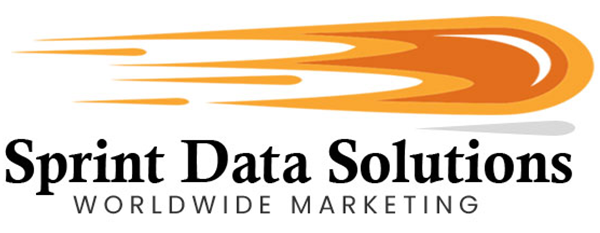Insurance Becomes More Important In Times Of Volatility
The concept of insurance exemplifies the philosophy, “It’s better to have it and not need it than need it and not have it.” Life is unpredictable, and unexpected accidents or events can impose significant financial burdens on individuals and businesses alike. In many cases, the financial fallout from such incidents exceeds the immediate resources of those affected. Insurance serves as a safety net in these situations, stepping in to absorb the financial impact in exchange for regular premium payments. These premiums, paid consistently over time, become a kind of financial reservoir that can be tapped when misfortune strikes, helping to manage the aftermath of a serious accident or loss.
In some areas, insurance isn’t just a recommendation—it’s a legal necessity. For instance, nearly every state in the U.S. mandates that drivers carry at least a minimum level of automobile insurance to legally operate a vehicle. This is a recognition by lawmakers that the financial risks associated with accidents—whether property damage, medical expenses, or legal liabilities—are too substantial to be left to chance. Yet, despite its importance, insurance is often viewed by the average person as a dull or burdensome expense, similar to eating vegetables: everyone knows it’s good for them, but few enjoy the process. It can feel like a drain on finances during calm periods, but in times of crisis, insurance can mean the difference between recovery and ruin.
This public perception presents a unique opportunity for insurers and marketers. Many individuals and even seasoned business professionals lack a deep understanding of insurance coverage or the distinctions between policies. They may be unaware of loopholes, exclusions, or superior alternatives available in the marketplace. Effective marketing—grounded in education and transparency—can illuminate these blind spots. Campaigns that clearly articulate the tangible benefits of coverage, while also highlighting potential pitfalls in existing plans, have the power to shift perspectives. Such initiatives not only build trust but can also prompt action, whether that means changing insurers, upgrading a policy, or finally protecting an uninsured asset or risk. In this way, thoughtful insurance marketing becomes more than sales—it becomes a public service.

Who Benefits?
The insurance industry in the United States offers a vast array of opportunities to serve both individual consumers and businesses across multiple sectors. Insurance providers can better target and segment their markets by identifying specific needs and tailoring policies to address those requirements. For individual consumers, there is growing demand for personalized health insurance, life and disability coverage, as well as property and casualty insurance, particularly in regions prone to natural disasters. The increasing adoption of technology also opens avenues for offering cyber insurance and digital identity protection. On the business side, industries such as healthcare, construction, manufacturing, and retail require specialized commercial insurance lines like liability insurance, workers’ compensation, business interruption coverage, and professional indemnity. Emerging sectors such as technology startups and gig economy platforms are also underserved and present lucrative opportunities for tailored products. Additionally, trends like climate change, remote work, and regulatory changes are reshaping insurance needs, creating niches for innovative solutions. By leveraging data analytics and market segmentation, insurance companies can craft more responsive and adaptive offerings that meet evolving consumer and commercial demands.
Health Insurance
Health insurance remains one of the most pressing concerns for Americans today. Despite being a global leader in medical research and innovation, the United States also ranks among the most expensive countries for healthcare access. While groundbreaking treatments and state-of-the-art procedures are widely available, their costs are often prohibitive—especially for those without employer-sponsored health plans. For millions of Americans working freelance, part-time, or in small businesses, the absence of comprehensive coverage means that a medical emergency could not only threaten life but also devastate personal finances, potentially burdening families for generations.
This ongoing crisis has prompted a widespread search for more affordable and reliable health insurance solutions. The introduction of the Affordable Care Act (ACA) marked a significant step forward, expanding coverage and introducing marketplaces that offer subsidized plans. However, many still find the ACA’s options limited, with high deductibles and limited provider networks. As healthcare expenses continue to rise, the demand grows stronger for innovative insurance models, community-based healthcare plans, and new public-private partnerships that can deliver quality care without the crushing costs. In this climate, any individual or organization that can provide a viable, cost-effective alternative to traditional health insurance is likely to receive serious attention from a population hungry for security and relief.
Medicare Part B
Medicare Part B, a key component of the U.S. healthcare system, often becomes a central focus for older adults and those approaching retirement age. Unlike traditional health insurance that many people associate with catastrophic medical events—such as major surgeries or intensive cancer treatments—Medicare Part B covers a broader and often more frequently used range of services. These include routine doctor visits, outpatient care, preventive services, mental health support, and durable medical equipment such as walkers, wheelchairs, and glucose monitors. It also includes lab tests and X-rays, and even medically necessary ambulance transportation, which can otherwise be financially burdensome.
This comprehensive coverage fills critical gaps left by hospital insurance (Medicare Part A), making it indispensable for individuals managing chronic conditions or requiring ongoing outpatient care. For this reason, awareness and concern around Medicare Part B are often just as pressing—if not more so—than traditional health insurance. As consumers become more informed about the scope of services Part B covers, especially in areas like mental health and preventive care, their engagement increases. This heightened interest presents a significant opportunity for healthcare providers and insurance professionals to connect with a receptive audience. Tailoring Medicare Part B offerings to meet the specific needs of this demographic can lead to substantial interest and improved healthcare outcomes through better access to essential services.
Life Insurance
The death of a loved one, while an inevitable part of the human experience, often leaves a profound emotional and financial void for surviving family members and close friends. This loss becomes even more critical when the deceased was the primary financial provider—commonly referred to as the “breadwinner”—who supported essential needs such as housing, food, education, and healthcare. In such cases, surviving dependents, particularly children, can face significant economic hardship. Life insurance exists to help mitigate these challenges and is one of the oldest and most widely recognized forms of insurance in the United States. Most Americans are at least generally familiar with its purpose. However, despite its ubiquity, life insurance policies can be surprisingly intricate, often containing complex terms, exclusions, and optional features known as “riders” that may introduce unexpected costs or limit coverage in ways many policyholders don’t fully understand. This complexity underscores the need for transparent, consumer-friendly products in the market. Insurance providers that prioritize simplicity, clarity, and genuine value—by reducing hidden pitfalls or offering innovative benefits—can stand out in a crowded marketplace and better serve the real needs of their customers.
Variable Annuity Holders
Variable annuities, while not classified as traditional insurance, are hybrid financial instruments frequently offered by insurance companies. They function as long-term investment vehicles with insurance features, combining elements of retirement planning and wealth management. To initiate a variable annuity, an individual must make either a substantial lump-sum payment or a sequence of scheduled contributions. These payments are then invested in a selection of sub-accounts, which often include mutual funds. The value of the annuity can fluctuate based on the performance of these underlying investments, hence the term “variable.”
At a predetermined time—commonly during retirement—the accumulated funds, which grow on a tax-deferred basis, are distributed either as a lump sum or through a structured series of payments. These payments can be directed to the policyholder or designated beneficiaries, such as a spouse or children. One of the notable advantages of variable annuities is the ability to customize features through optional riders, such as guaranteed minimum income benefits or death benefits, offering a blend of growth potential and financial security.
Because of their dual nature, appealing both as investment tools and retirement income strategies, variable annuities attract a diverse range of individuals. These include those nearing retirement, high-income earners looking for tax-deferred growth, and families seeking to ensure financial continuity for loved ones. Their flexibility, combined with the promise of long-term income, continues to make variable annuities a compelling choice for strategic financial planning.
Auto Insurance
Auto insurance is a legal requirement in most regions for anyone operating a motor vehicle, but not all policies provide the same level of protection, flexibility, or value. With a broad range of coverage options, from liability-only plans to comprehensive packages, the landscape can be confusing for consumers. Many drivers end up purchasing insurance based on convenience, marketing influence, or multi-policy discounts from large providers—often without fully understanding the terms or evaluating whether the coverage truly aligns with their driving habits or risk profiles. As a result, they may be underinsured or paying more than necessary for features they don’t need. This creates a strong opportunity in the auto insurance market for innovative, customer-centric offerings—ones that emphasize transparent pricing, tailored coverage, and educational support. Such products can resonate with a growing base of policyholders who are seeking smarter, more personalized alternatives that meet both their budget and protection needs.
Home Insurance
Home insurance, while not mandated by law in the same way as auto insurance, is still effectively essential for many homeowners. Financial institutions typically require proof of home insurance coverage as a condition for approving a mortgage loan. Without this protection in place, obtaining a mortgage—and by extension, purchasing a home—may not be possible for most buyers. This makes home insurance a de facto requirement for anyone financing their property through a lender.
The home insurance market is mature and saturated with options ranging from basic to comprehensive coverage. However, many homeowners end up with minimal protection—often due to the convenience and cost-savings of bundling policies such as home and auto with a single provider. These bundled packages, while seemingly economical, may leave policyholders underinsured or unaware of potential gaps in coverage. With better consumer education about the value of more robust policies—such as those offering full replacement cost, broader liability coverage, or specialized protection for natural disasters—many would be willing to switch providers or upgrade their plans. In a competitive insurance landscape, companies that clearly communicate these advantages and demystify policy terms stand a better chance of earning customer loyalty.
Renter Insurance
In recent years, insurance providers have increasingly recognized that the need for coverage extends beyond just homeowners to include the growing population of renters. In cities like New York, where rent-controlled apartments are a long-term housing solution for many, residents may live in the same unit for decades. For these individuals, renters insurance provides crucial financial protection and peace of mind in the event of theft, fire, water damage, or liability claims. As housing affordability remains a challenge and economic pressures drive more people to rent rather than own, the demand for renters insurance has grown steadily. Forward-thinking insurers have begun tailoring policies that address the unique needs of apartment dwellers—offering affordable, flexible options that cover personal belongings, temporary relocation expenses, and personal liability. Through strategic marketing efforts and educational campaigns, renters are becoming more aware of the potential risks they face and the practical benefits of having coverage. This growing awareness is transforming the renters insurance market into a significant and essential segment of the broader insurance industry.
Vault Insurance
Placing valuables and important possessions in a vault is often seen as the ultimate safeguard against loss, offering both physical security and peace of mind. However, even the most secure vaults are not completely immune to risks. Catastrophic events such as fires, floods, earthquakes, or highly coordinated thefts can still compromise the safety of what’s inside. In such cases, the financial and emotional losses can be devastating—especially when the items are irreplaceable or of high value.
This is where vault insurance becomes an essential layer of protection. It acts as a financial safety net, ensuring that owners are not left empty-handed after an unforeseen event. For individuals already willing to invest in secure storage, the additional cost of insurance is often a reasonable step toward comprehensive protection. With the right marketing strategy—focusing on the peace of mind, long-term value, and real-world risk mitigation—customers can be persuaded that vault insurance isn’t just an extra cost, but a smart, proactive decision that preserves the full value of their investment.
Commercial Business Insurance
Commercial business insurance is one of the oldest and most essential forms of risk management, tracing its roots back to ancient times when merchants sought protection for goods transported across oceans and continents. Today, this legacy continues with modern policies offering expansive and multifaceted coverage tailored to the complex needs of businesses. From safeguarding physical assets like buildings, tools, and machinery, to providing financial shields against liability claims, cyber threats, and business interruptions, commercial insurance is a cornerstone of strategic planning for enterprises of all sizes. Smart entrepreneurs and companies understand that protecting their operations isn’t a luxury—it’s a necessity. As industries evolve and risks diversify, the demand for robust, competitively priced, and adaptive insurance solutions remains high. In this ever-changing commercial landscape, having comprehensive insurance isn’t just about mitigating losses; it’s about ensuring stability, resilience, and long-term growth.
Personal Property Insurance
Many individuals mistakenly believe that standard home insurance provides comprehensive protection, but this is often far from the truth—especially when policies come with attractively low premiums. These types of policies may cover only the physical structure of the home, leaving valuable items inside—like electronics, furniture, jewelry, collectibles, or cherished family heirlooms—completely unprotected. This can lead to devastating financial and emotional losses in the event of theft, fire, or natural disaster. That’s where personal property insurance becomes crucial. This specialized coverage safeguards the belongings inside a home, ensuring that the financial investment in both necessities and sentimental items is not lost. Importantly, personal property insurance isn’t just for homeowners; renters can benefit significantly as well, especially since most landlord insurance policies don’t extend coverage to tenants’ personal belongings. For many, the contents of a home carry more practical value or emotional weight than the structure itself, making personal property insurance an essential consideration for comprehensive risk management. It’s a compelling product for anyone who values peace of mind and wants to ensure their lifestyle and legacy are preserved in the face of unexpected events.

Insurance Bond
An insurance bond, while distinct from a traditional insurance policy, operates under a similar principle—offering a guarantee of financial compensation in specific situations. Rather than protecting the holder from risk as a policy might, a bond acts as a three-party agreement among the principal (the party required to obtain the bond), the obligee (the party requiring the bond), and the surety (the company that issues the bond). Its primary purpose is to reassure the obligee that the principal has both the intent and the financial backing to fulfill their obligations, whether contractual or fiduciary. There are numerous types of bonds tailored to various industries and scenarios—fidelity bonds cover employee dishonesty, license and permit bonds ensure regulatory compliance, and bid, performance, and payment bonds provide security in construction projects to guarantee work completion and supplier payments.
Because these bonds serve as a financial safeguard and are often mandated by law or contract, businesses across sectors—whether startups seeking licenses or contractors bidding on public projects—frequently find themselves in need of bonding services. This constant demand, coupled with the legal necessity and high stakes involved, makes marketing insurance bonds a strategic opportunity. Targeting small to medium enterprises, construction firms, and even professionals in fields like finance or healthcare can yield substantial engagement. By educating potential clients about bond requirements and providing streamlined bonding solutions, marketers can position themselves as valuable partners in risk management and compliance.
Business Interruption Insurance
When a home suffers damage due to a disaster, the consequences are primarily personal—residents may need to seek temporary shelter until repairs are completed, but their source of income is typically unaffected. In contrast, when a commercial property is impacted by a disaster, it can bring an entire business to a halt. This disruption doesn’t just affect the owner; it puts the livelihood of employees and the broader economic stability of the company at risk. In such situations, business interruption insurance plays a critical role by acting as a financial safeguard that helps businesses recover and remain operational during periods of downtime.
Business interruption insurance goes beyond standard property insurance by covering lost income, operating expenses, and ongoing costs while normal business operations are suspended. This type of coverage can include paying employee wages, covering rent or mortgage obligations, replacing lost revenue, and even financing a temporary relocation to help resume operations as quickly as possible. For businesses that rely on foot traffic or specific physical locations—like restaurants, retail stores, or manufacturing facilities—this can mean the difference between survival and permanent closure. Because each business has unique risks and operational needs, it’s crucial that business interruption insurance is tailored appropriately. Customizable features ensure that the policy aligns with the specific structure, size, and vulnerability of the business, offering more comprehensive protection during times of crisis.
Fire Insurance
Fire insurance remains one of the most recognized and essential forms of property protection. The destructive power of fire can reduce buildings to rubble in moments, leaving behind emotional and financial devastation. For property owners, the assurance that fire-related losses are financially covered offers invaluable peace of mind. Yet, not all fire insurance policies are created equal. Coverage terms, exclusions, and claim procedures can vary widely between insurers. Some policies may fall short in key areas such as replacement cost, loss of income, or coverage for structural upgrades required by new building codes. This disparity underscores the importance for consumers to carefully compare policy features and not just premiums. Companies that provide comprehensive protection at competitive rates are well-positioned to attract discerning clients, especially in a market where value and transparency are in high demand.
High-Risk Insurance
Many individuals value the protection and peace of mind that insurance coverage provides, yet not all can qualify for traditional policies due to various risk factors. This is where non-standard or “high-risk” insurance becomes essential. These specialized policies cater to people who fall outside the underwriting guidelines of standard insurers—such as drivers with multiple traffic violations, a history of missed premium payments, or property owners looking to insure buildings they do not plan to occupy. Non-standard insurance also serves individuals with poor credit scores, newly licensed drivers, or owners of unconventional homes and vehicles that regular insurers deem too risky or unconventional.
Despite the higher risk involved, this segment of the insurance market remains active and profitable. Many high-risk individuals are motivated to secure coverage, either because it’s legally required—as with auto insurance—or because they still seek protection against loss. For insurers and agents willing to navigate the complexities of underwriting non-standard policies, this niche offers a steady flow of customers who are underserved by traditional carriers. The key lies in understanding these customers’ unique circumstances and providing tailored solutions that balance coverage needs with manageable premiums.

How We Can Help
Sprint Data Solutions Worldwide Marketing is a proudly American-owned and operated enterprise, founded by a disabled veteran with a mission to empower businesses through intelligent data-driven marketing. Originally established as a direct mail marketing agency, we have evolved into a full-spectrum marketing solutions provider with reach across the United States, North America, and international markets. Our company specializes in supplying comprehensive, accurate, and highly targeted consumer and business lists—crucial tools for organizations in the insurance industry and beyond. We stand out with competitive pricing, regularly refreshed databases, and a strategic edge powered by advanced AI-driven analytics, machine learning technology, and partnerships with multiple trusted data sources. Our commitment to precision, innovation, and integrity helps our clients achieve superior results in their outreach and lead generation efforts.
If you’re aiming to reach insurance prospects through precisely targeted geographic and demographic criteria, we offer comprehensive consumer data solutions tailored for your marketing strategy. Whether you’re planning outreach via direct mail, telemarketing, email campaigns, or SMS/text message marketing, our robust databases and multichannel capabilities can help you connect with the right audience at the right time. Let us help you increase response rates and improve customer acquisition by delivering accurate and segmented leads that align with your specific goals. Contact us today to get started with a customized approach.






